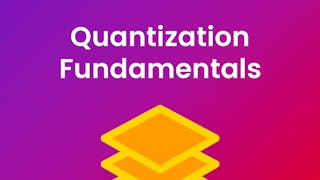Symmetry is everywhere. In the grand scheme of things it is the blueprint by which the universe operates. We see symmetry in nature, art, architecture, science and engineering. This course explores the Beauty, Form and Function of Symmetry in common objects, then progresses to investigate tiling and tessellation, with the extension of these concepts to the atomic structure of crystals.



Beauty, Form & Function: An Exploration of Symmetry


Instructors: Tim White
3,113 already enrolled
Included with 
Details to know

Add to your LinkedIn profile
2 assignments
See how employees at top companies are mastering in-demand skills


Earn a career certificate
Add this credential to your LinkedIn profile, resume, or CV
Share it on social media and in your performance review

There are 8 modules in this course
These lectures will refresh your intuitive appreciation of symmetry in common objects and introduce the mathematical and symbolic descriptors of point symmetry.
What's included
7 videos8 readings
Some of the most beautiful examples of symmetry appear in flowers. These lectures use flowers as exemplars of the application of point symmetry to concisely describe the presence of mirror lines and rotation points.
What's included
6 videos
The key concepts in plane symmetry are illustrated by examining tessellations in architecture. The important concept of the asymmetric unit is also introduced. The practical importance of symmetry is illustrated through a discussion of chirality and its impact on drug design and efficacy.
What's included
3 videos2 readings
The formal mathematical nomenclature of point symmetry is introduced, including the relationship between symmetrically linked objects.
What's included
3 videos1 assignment2 peer reviews
Plane Groups that describe symmetry operations in 2 dimensions are illustrated using the art of Escher. The 2D Bravais Lattices that capture all tiling permutations are covered together with the difference between ‘primitive’ and ‘centred’ unit cells.
What's included
3 videos1 reading
The 17 Plane Groups are formally introduced and their representation in the International Tables of Crystallography explained. By mastering the plane group diagrams and figures, all common tessellations can be deconstructed into their symmetric components.
What's included
3 videos
These lectures examine the role of symmetry in Islamic architecture and history in the context of regular and irregular networks. The transition to 3D or Space Symmetry is via the five Platonic Solids. The 2D symmetry operators (rotation, reflection, glide) are expanded to include screw axes and axial glide in 3D symmetry.
What's included
3 videos2 readings
The 3D Bravais Lattices are the basis for describing the atomic relationships found in many crystalline materials. The way in which Space Symmetry determines not only the atomic locations but also the chemical composition of crystals is explained.
What's included
4 videos1 assignment1 peer review
Instructors


Explore more from Electrical Engineering


Johns Hopkins University


University of Virginia


University of Colorado Boulder


DeepLearning.AI
Why people choose Coursera for their career





Open new doors with Coursera Plus
Unlimited access to 10,000+ world-class courses, hands-on projects, and job-ready certificate programs - all included in your subscription
Advance your career with an online degree
Earn a degree from world-class universities - 100% online
Join over 3,400 global companies that choose Coursera for Business
Upskill your employees to excel in the digital economy
Frequently asked questions
Access to lectures and assignments depends on your type of enrollment. If you take a course in audit mode, you will be able to see most course materials for free. To access graded assignments and to earn a Certificate, you will need to purchase the Certificate experience, during or after your audit. If you don't see the audit option:
The course may not offer an audit option. You can try a Free Trial instead, or apply for Financial Aid.
The course may offer 'Full Course, No Certificate' instead. This option lets you see all course materials, submit required assessments, and get a final grade. This also means that you will not be able to purchase a Certificate experience.
When you purchase a Certificate you get access to all course materials, including graded assignments. Upon completing the course, your electronic Certificate will be added to your Accomplishments page - from there, you can print your Certificate or add it to your LinkedIn profile. If you only want to read and view the course content, you can audit the course for free.
You will be eligible for a full refund until two weeks after your payment date, or (for courses that have just launched) until two weeks after the first session of the course begins, whichever is later. You cannot receive a refund once you’ve earned a Course Certificate, even if you complete the course within the two-week refund period. See our full refund policy.
More questions
Financial aid available,

